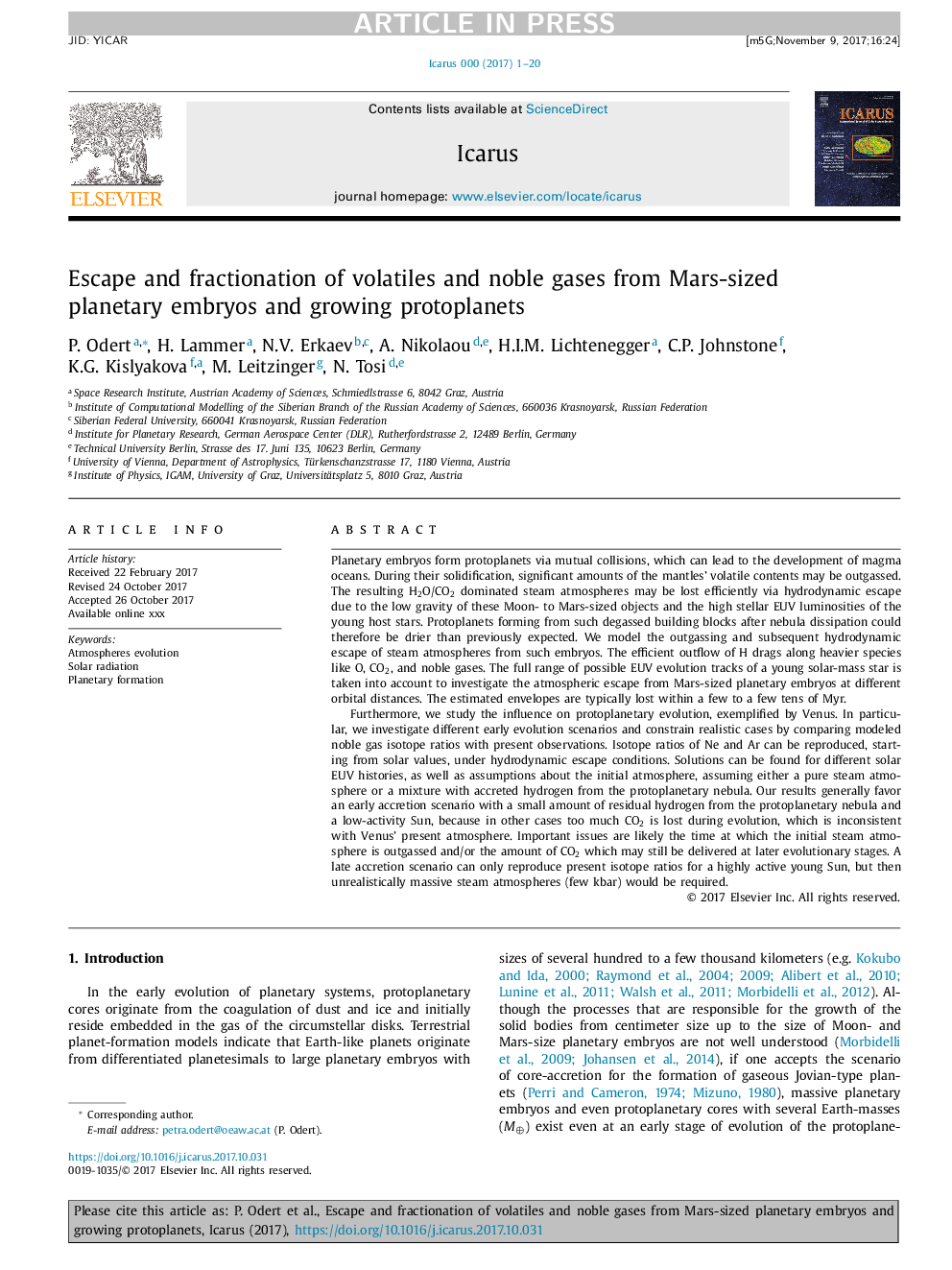| Article ID | Journal | Published Year | Pages | File Type |
|---|---|---|---|---|
| 8134256 | Icarus | 2018 | 20 Pages |
Abstract
Furthermore, we study the influence on protoplanetary evolution, exemplified by Venus. In particular, we investigate different early evolution scenarios and constrain realistic cases by comparing modeled noble gas isotope ratios with present observations. Isotope ratios of Ne and Ar can be reproduced, starting from solar values, under hydrodynamic escape conditions. Solutions can be found for different solar EUV histories, as well as assumptions about the initial atmosphere, assuming either a pure steam atmosphere or a mixture with accreted hydrogen from the protoplanetary nebula. Our results generally favor an early accretion scenario with a small amount of residual hydrogen from the protoplanetary nebula and a low-activity Sun, because in other cases too much CO2 is lost during evolution, which is inconsistent with Venus' present atmosphere. Important issues are likely the time at which the initial steam atmosphere is outgassed and/or the amount of CO2 which may still be delivered at later evolutionary stages. A late accretion scenario can only reproduce present isotope ratios for a highly active young Sun, but then unrealistically massive steam atmospheres (few kbar) would be required.
Keywords
Related Topics
Physical Sciences and Engineering
Earth and Planetary Sciences
Space and Planetary Science
Authors
P. Odert, H. Lammer, N.V. Erkaev, A. Nikolaou, H.I.M. Lichtenegger, C.P. Johnstone, K.G. Kislyakova, M. Leitzinger, N. Tosi,
